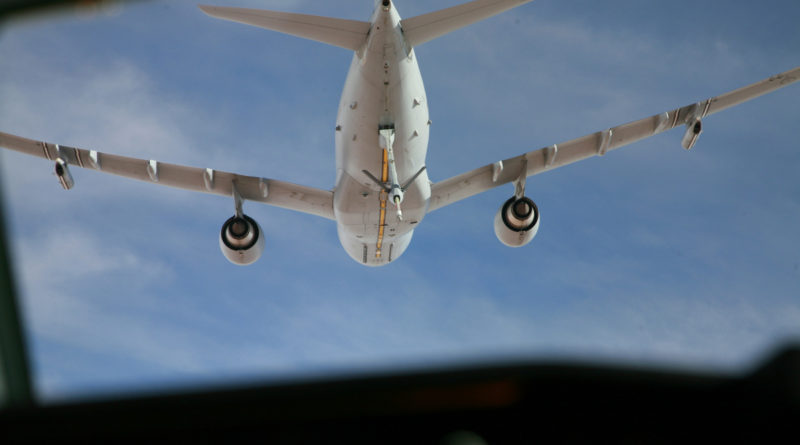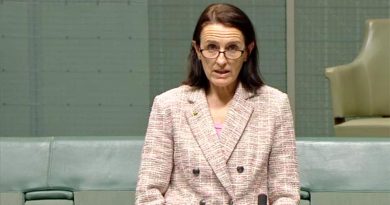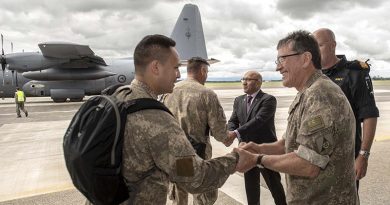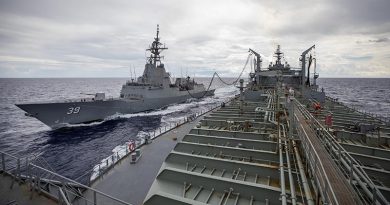Australia’s KC-30A fleet achieves 20,000 flying hours
Share the post "Australia’s KC-30A fleet achieves 20,000 flying hours"

The KC-30A Multi Role Tanker Transport fleet has achieved a remarkable 20,000 flying hours as it continues to provide global reach for the Australian Defence Force (ADF).
CAPTION: A RAAF KC-30A multi-role tanker transport as seen from an aircraft about to be refuelled. Photo by Major Cameron Jamieson.
This significant milestone was achieved on a mission from Yokota Air Base in Japan to Kuala Lumpur in Malaysia on Wednesday 19 October 2016.
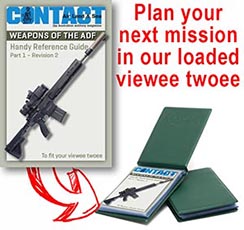 Wing Commander Rob Williams, the Commanding Officer of No. 33 Squadron, said this was a memorable achievement for the Royal Australian Air Force.
Wing Commander Rob Williams, the Commanding Officer of No. 33 Squadron, said this was a memorable achievement for the Royal Australian Air Force.
“Each person involved with the KC-30A, from the transition into service to our achievement of 20,000 flying hours, should be proud of being a part of the KC-30A story,” Wing Commander Williams said.
“The milestone was reached on an international flight supporting two completely different missions, which further demonstrates the value of the aircraft.
“The KC-30A has transformed and enhanced the global reach of the ADF and will continue to mature in its role and application in the years to come.”
The Air Force has five KC-30A aircraft in service operated by No. 33 Squadron from RAAF Amberley in South East Queensland. The aircraft was first flown by Air Force in September 2011.
KC-30A aircraft continue a high tempo of operations participating most recently in Exercise PITCH BLACK where it performed as a force multiplier conducting air-to-air refuelling for numerous fighter aircraft.
Throughout its 20,000 flying hours, the KC-30A fleet has achieved a number of firsts including a record for the number of passengers carried on an Air Force aircraft; 220 cadets from the Australian Defence Force Academy in March 2012.
The KC-30A’s most well known deployment is Operation OKRA in the Middle East Region.
The aircraft has provided over 36 million litres of fuel to Australian and coalition aircraft.
The KC-30A is fitted with two forms of air-to-air refuelling systems — an Advanced Refuelling Boom System mounted on the tail of the aircraft and a pair of refuelling pods underneath each wing. These systems are controlled by an Air Refuelling Operator in the cockpit, who can view refuelling on 2D and 3D screens.
Having a fuel capacity of more than 100 tonnes, a KC-30A can remain fly 1800km from its home base with 50 tonnes of fuel available to offload. In its transport role, the KC-30A is capable of carrying as many as 270 passengers and comes with under-floor cargo compartments which can accommodate 34 tonnes of cargo.
Advanced mission systems are also fitted to the aircraft. They include the Link 16 real-time data-link, military communications and navigation suites, and an electronic warfare self-protection system for protection against surface-to-air missiles.
Another milestone…
On 5 October, an KC-30A Multi-Role Tanker Transport achieved another milestone when it made its first contact with a Republic of Singapore Air Force (RSAF) F-16D+ Falcon aircraft on.
The KC-30A deployed to Singapore for a week-long series of trials, making 49 contacts and transferring more than 35,000 litres of fuel.
The trials involved personnel from No. 33 Squadron and the RAAF’s Aircraft Research and Development Unit working closely with the RSAF Flight Test Agency.
Squadron Leader Michael List from No. 33 Squadron was the aircraft captain during the testing, and said it was a great achievement for the combined RAAF and RSAF test team.
“The F-16D+ is refuelled from the KC-30A’s Advanced Refuelling Boom System (ARBS), which is controlled by the Air Refuelling Operator,” Squadron Leader List said.
“Each contact was made with differing configurations of height, speed and aircraft weight as part of the program.”
The trials demonstrated the close working relationship between the Royal Australian Air Force and the RSAF.
“This program has further increased the variety of aircraft able to be refuelled from the KC-30A, and enhanced the ability of the tanker to contribute to regional security outcomes,” Squadron Leader List said.
Air-to-air refuelling allows aircraft to fly for longer periods and carry heavier stores.
The method of air-to-air refuelling from the KC-30A’s ARBS requires both aircraft to be travelling at high speed in close proximity to each other.
The KC-30A’s ARBS is also compatible with refuelling the F-35A Lightning II, as well as the E-7A Wedgetail, RAAF C-17A Globemaster, and other KC-30As.
Each KC-30A is also equipped with two hose-and-drogue refuelling pods that are compatible with the RAAF’s own Hornet and Super Hornets, and the Growler electronic attack aircraft.
.
.
.
.
.
.
.

.
.

.
Share the post "Australia’s KC-30A fleet achieves 20,000 flying hours"

